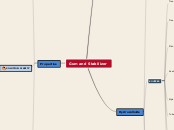arabera Katie McKenzie 4 years ago
726
Biomechanics
The principles of biomechanics encompass various fundamental concepts essential for understanding the mechanics of human movement. Newton's laws of motion are central to this field, describing how forces influence the motion and acceleration of objects, and emphasizing the principle of inertia.









